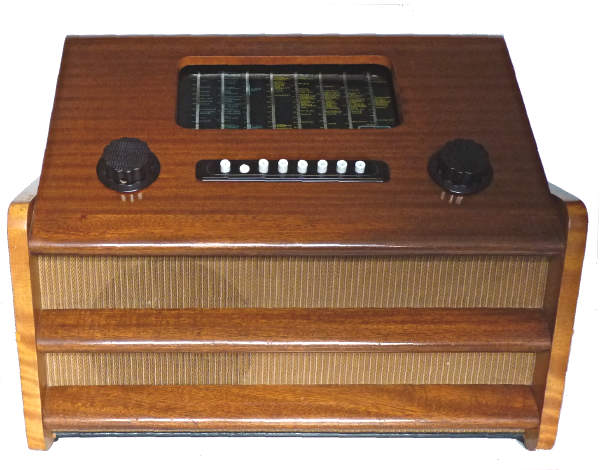
serial number 291190

There were two models of this radio, the A128 (AC only) and the U128 (AC/DC) They were both released in January 1948 price £ 41 6s. 8d. Murphy advertised it as "The set for the short-wave enthusiast" It covers six short wave bands as well as long and medium wavebands. Each is brought into operation by depressing the appropriate button below the dial. The short-wave bands are 'band spread so that the full travel of the tuning knob covers the band of interest.
It uses six valves:SP181 (RF amplifier) TH233 (OSC/Mixer) VP133 (IF amp) HL133DD (Detector/AVC PEN383 (Output) U403 (HW rectifier)
This valve radio was given to me by Bernie Guymer in 2011. He said that his parents who were the proud owners were on the verge of dumping it as it no longer worked. They bought it second hand in the 1950s and Bernie had happy memories of listening to Radio Luxembourg in the 60s on it.
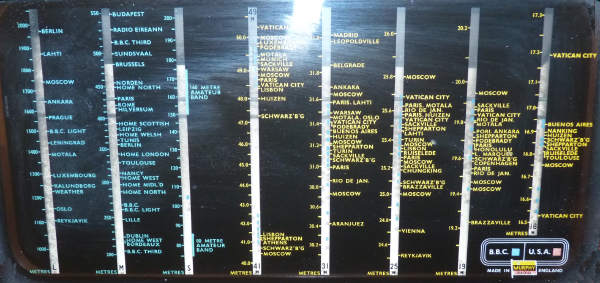
This is a close up view of the dial
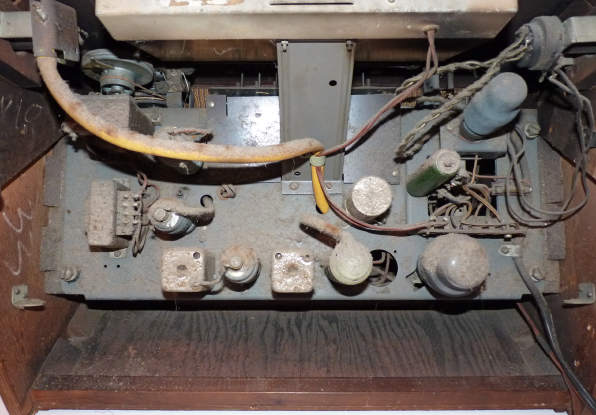
Inside with 60 years of dust.
The chassis is inconveniently mounted at an angle and held in place by four long screws. The Tone control/On/Off switch (on the right in this view) and the Pickup/Radio must be removed before taking out the chassis. I had to make a long box spanner from a piece of copper pipe to pass over the shafts and slacken the nuts.
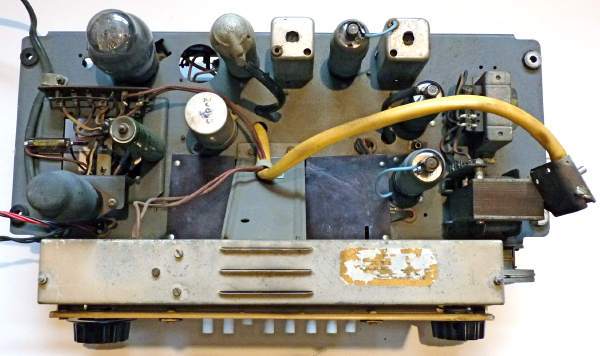
Chassis after cleaning
The screened wires to the Pickup/Radio switch are within the yellow sleeving. The glass scale plate is illuminated by a 15 Watt 230 volt lamp housed in the louvered steel box. The redundant openings in the chassis appear to have been designed to suit the AC only model of this radio. The rectifier, dropper resistor, fuse and voltage selector strip are mounted on a steel sub chassis which is located over the opening which would accommodate the transformer in the AC model.
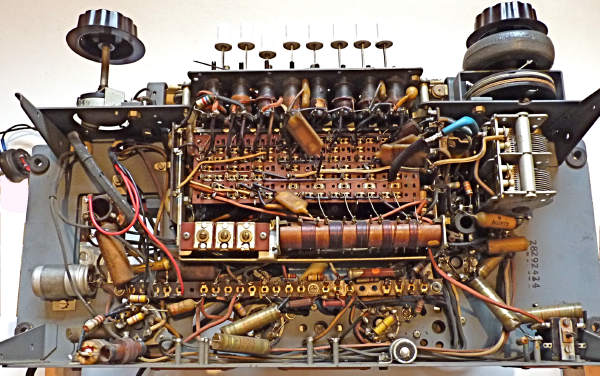
There are three sets of coils for each of the eight wavebands. The coils trimmer capacitors and wave change switches are assembled as one complete unit. As far as I could see all the components are original, the metal tube capacitors are of American manufacture.
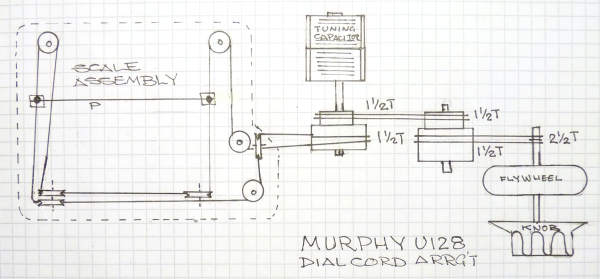
The tuning mechanism worked well once it had been cleaned and lubricated though I noted that the left hand end of the pointer had been attached in such a way that it fouled the inner string at the lower end of its travel. This was easily rectified but I envisaged that restringing if ever needed in the future would be a nightmare, hence the diagram! When I put the radio back in its cabinet the pushbuttons failed to latch because they were misaligned with the holes in the Bakelite escutcheon. The latter can be moved slightly up and down and left to right if the screws at the rear are slackened slightly. However, I found that there was insufficient play to enable the pushbuttons to work reliably. It would seem that over the years the four rubber grommets through which the fixing bolts pass had become permanently squashed. The solution I chose was to make four shims from very thin plywood and to glue them in place beneath the grommets. Success! The radio picks up stations on all wavebands though very few on the 19 metre and 16 metre bands even with a substantial aerial.

